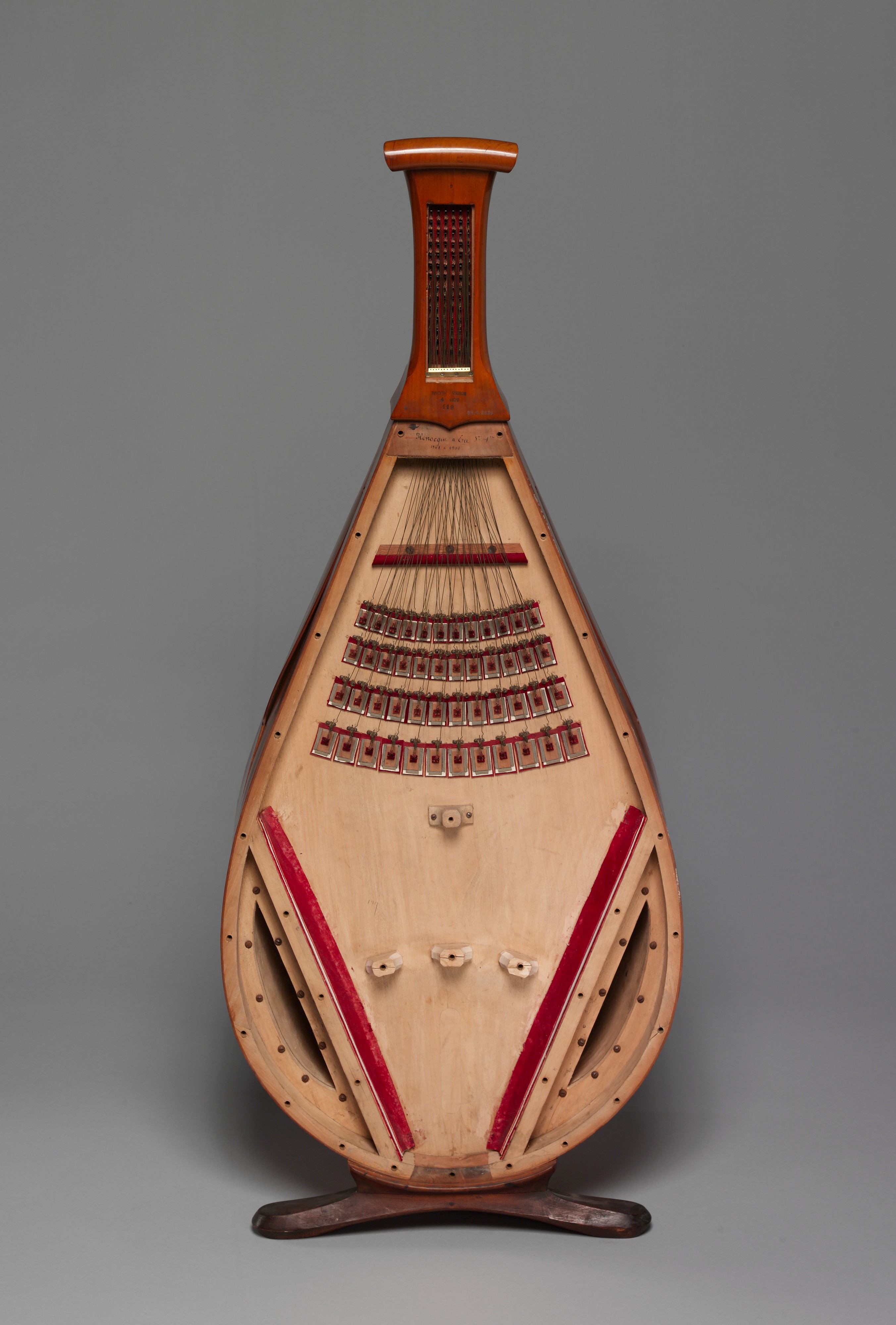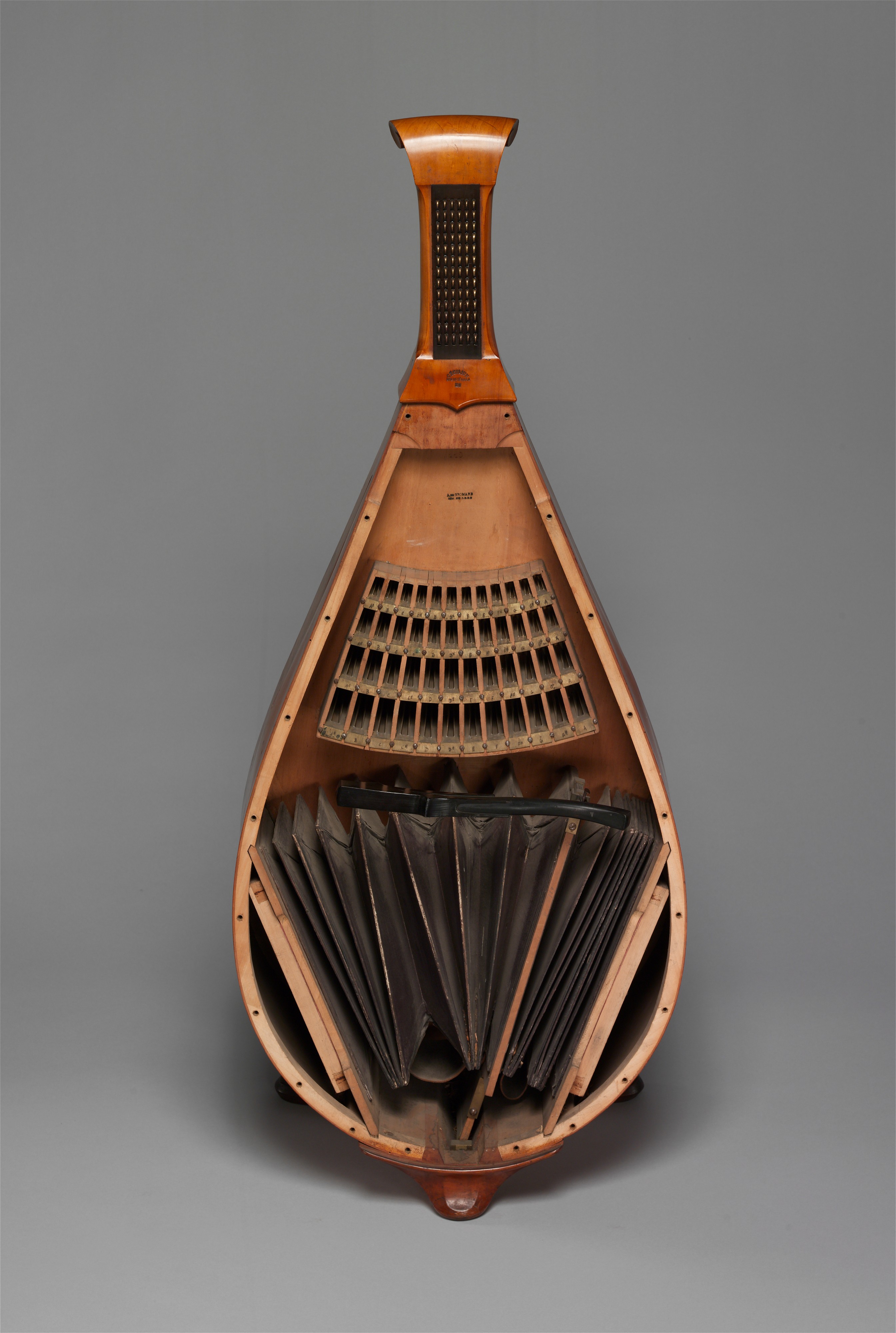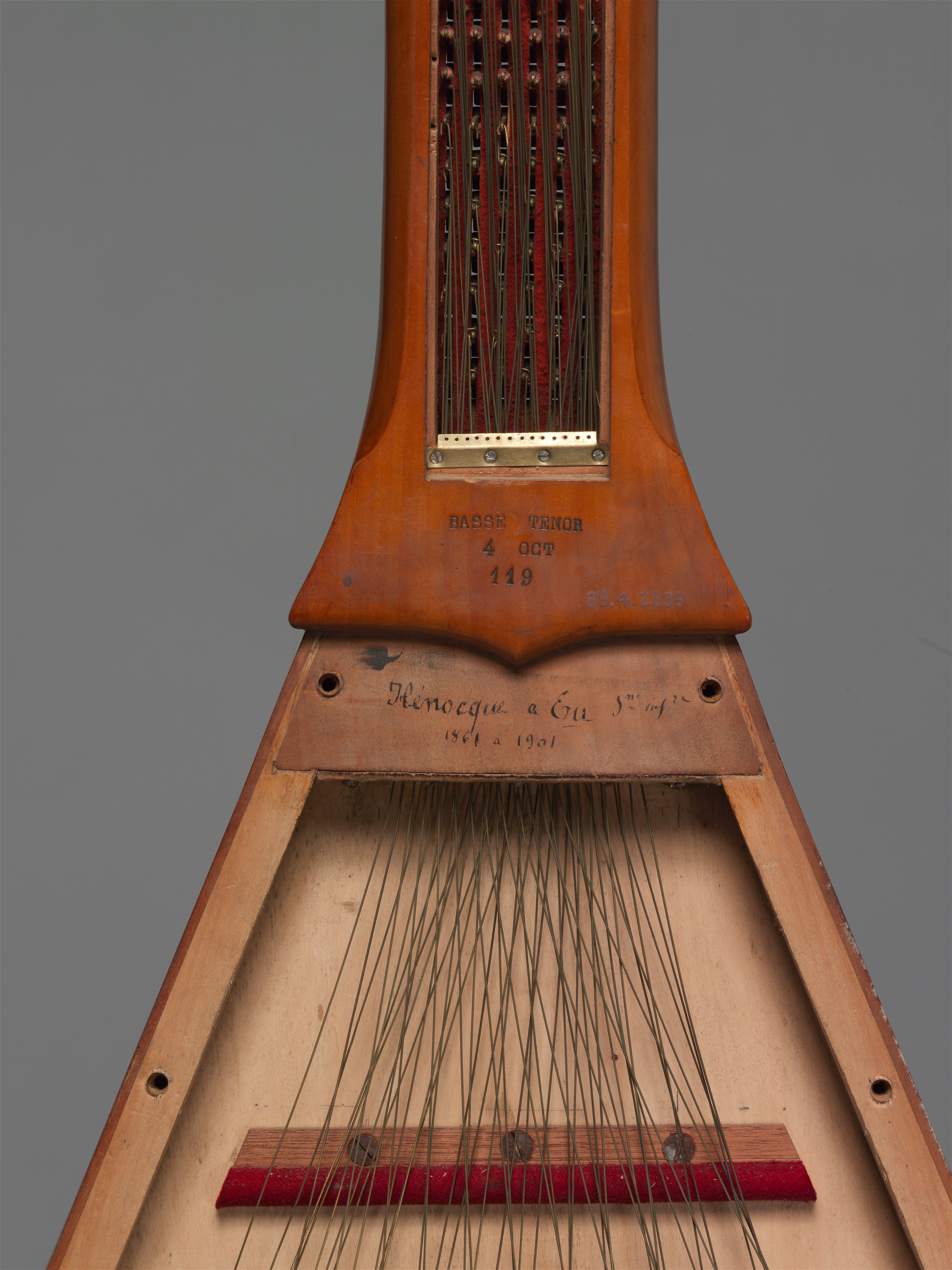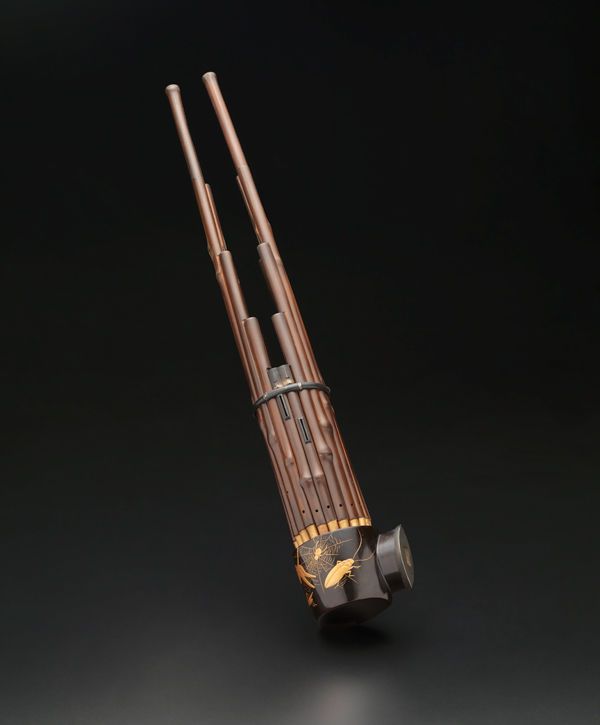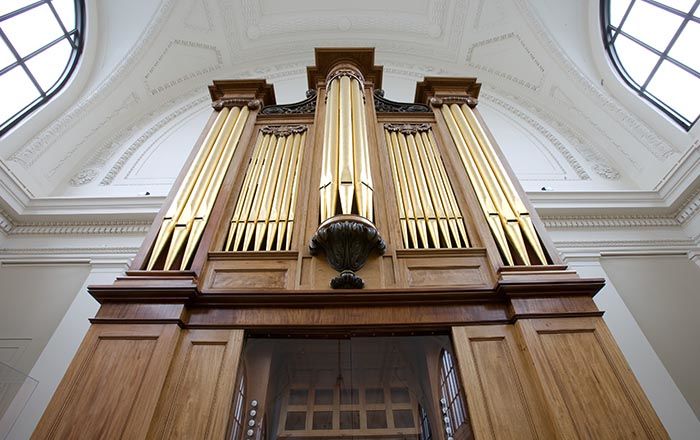Cécilium
Arthur Quentin de Gromard French
Not on view
The cécilium was designed in 1869 by Arthur de Gromard, a scion of an old noble family in Eu, Normandy. It became the signature instrument of the Cécilienne, the local philharmonic society that Gromard founded in 1857. Compared to the melophone, the cécilium's inner construction is more rationalized, and the pumping of the bellows is designed to imitate the bowing of a cello. Gromard sought to create an instrument suited to classical music, not only as a replacement for the cello but as an instrument with a character of its own, with an expressive sound whose beauty reveals itself most when accompanied by a string quartet. Nonetheless, its sound was not powerful enough to meet the demands of a regular orchestral instrument. When Gromard died in 1896, the cécilium fell out of use.
This image cannot be enlarged, viewed at full screen, or downloaded.
This artwork is meant to be viewed from right to left. Scroll left to view more.


